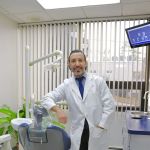Oral Health Challenges in Schools
Early childhood caries (ECC) are the most common chronic childhood disease in the United States. Left untreated, tooth decay can have severe consequences on a child's ability to eat, sleep, speak, play, and learn. There are persistent disparities in oral health, and many children, especially those from low-income families, lack access to proper dental care. American students miss over 51 million hours of school each year due to oral health problems. Tooth decay is far more prevalent than childhood obesity, asthma, and diabetes.
The Importance of School-Based Oral Health Programs
School-based models can provide essential oral health services for students, parents, and school staff. These include promotion of healthy school nutrition, oral screenings, comprehensive dental care, and identification of a dental home. The AAP oral health risk assessment tool can assist in screening and referral. One full-time professional school nurse in every school and support for school-based health centers are crucial. Pediatricians also play a significant role in collaborating with school nurses to improve the health and academic achievement of students.
Resources and Tools for Oral Health Education
There are numerous resources available to aid in creating an oral health education program. The Smiles For Life curriculum, the Partnership for Integrating Oral Health Care into Primary Care Project, the Community Preventive Services Task Force guide, and various reports and toolkits provide valuable information and strategies. Websites like Healthychildren.org, American Academy of Pediatric Dentistry, and CDC Children's offer useful oral health information for families.
Best Practices and Approaches
Best practice approaches for state and community oral health programs involve a public health strategy, assessment of evidence, and use of practice examples. Screening programs help identify dental issues, and prevention programs such as sealant and fluoride treatments offer protection. Restorations are necessary for children from low-income families. Educating stakeholders and community members on the importance of oral health is essential, and establishing dental screening programs in schools can help highlight the need for better services.
Additional Information and Resources
Several other resources and initiatives contribute to improving oral health in schools. These include fluoride guidelines, WIC programs, online training modules like Open Wide, and the Oral Health Resource Bulletin. Various checklists, guides, and FAQs also provide support for implementing successful oral health programs in school-based settings.
In conclusion, creating an oral health education program for schools is a complex but vital task. By understanding the challenges, leveraging available resources and tools, and adopting best practices, we can ensure that children receive the oral health care and education they need for a healthy and successful future. It requires the collaboration of various stakeholders, including schools, healthcare providers, and families, to make a significant impact on the oral health of our children.

 Dental Smiles of West Chicago
Dental Smiles of West Chicago Pearl River Family Dentistry
Pearl River Family Dentistry Central Dental - Dentist Westchester NY
Central Dental - Dentist Westchester NY Pro Dentists of Buford
Pro Dentists of Buford Smileland Pediatric Dentistry & Braces of Westborough
Smileland Pediatric Dentistry & Braces of Westborough Seattle Smiles Dental
Seattle Smiles Dental The Importance of Oral Health Education During Pregnancy for a Healthy Pregnancy
The Importance of Oral Health Education During Pregnancy for a Healthy Pregnancy Why Skipping Dental Checkups Can Lead to Bigger Oral Health Problems
Why Skipping Dental Checkups Can Lead to Bigger Oral Health Problems Advantages of Porcelain Dental Restorations
Advantages of Porcelain Dental Restorations Best Tips for Brushing Your Teeth Properly for Healthy Gums: Essential Techniques for Oral Health
Best Tips for Brushing Your Teeth Properly for Healthy Gums: Essential Techniques for Oral Health How Can Diabetes Cause Tooth and Gum Problems? Preventing and Managing Oral Health Issues
How Can Diabetes Cause Tooth and Gum Problems? Preventing and Managing Oral Health Issues Healthy Habits for Promoting Good Oral Health and Hygiene: Tips for a Healthy Smile
Healthy Habits for Promoting Good Oral Health and Hygiene: Tips for a Healthy Smile